How do you create content to tell your story? Be intentional about it.
Whether we use it to our advantage or not, headed into 2016, we as individuals and organizations are media companies. With a camera in our smartphone we can now tell our story (or thoughts, concerns, or feelings) with the push of a button on a variety of platforms that is then amplified to 50 or 5,000 followers. Unfortunately, several organizations haven’t grasped that they are also a media company and need to put out content. Instead, they rely on traditional marketing tactics with a push “buy my product” mentality.
I’ve said it before and I’ll say it again: this generation cares more about the story than the hard sell.
How do we tell our story if we are service based company or if our employees don’t have the time. The harsh reality is, those are just a few of many excuses that need to stop. But let me explain. A few weeks ago I spent time training George Washington University (GWU) Undergraduate Business School office and then ran a similar session for their Lemonade Day DC (LDDC) student council.
To give you some context, GWU Business School is more of a service-based department run by predominantly young professionals while LDDC is a 6-week financial literacy, entrepreneurship, service-based program run in the spring semester culminating with a citywide event in April.
After sharing examples of best practices, compelling content that sticks and why, and then ways to find their story, I challenged 3 teams in the GWU Business School and 4 groups in LDDC to spend 20 minutes to come up with original, real-time content that could be shared on their respected organization's Twitter, Instagram, or Snapchat accounts.
Each group had "swag" from their department, items from around campus, as well as random props including holiday decorations. The staff with the business school were able to get creative and had the ability to come up with a few images and video from their smartphone within minutes and another 10 minutes coming up with creative post copy to match their digital voice.
The students from LDDC mainly focused on the lemons and kept things simple. Their imagery was sharp, creative, and fit the platform they were posting it on. Even their post copy and choice of hash tags communicated their digital personality.
Both the GWU Business School and the LDDC council had a range of individuals that ranged from a 1 (not so social media-savvy or creative) all the way to a 10 (those that are daily social media practitioners).
Here is some content that came from the activity:
Below are four tactics you can implement to start sharing your story rather than solely putting out marketing/push content (aka the hard sell).
1. In the life of exercise
Break down a day in the life, week in the life, and a month or semester in the life of your job. (You can do the same if you oversee an office).
Think small, micro-content. Everything from the meetings and people you interact with to the events you prepare for to the physical items that makes up your organization (i.e. staff, t-shirts, products, books, etc). Spend 10 minutes and right down on 3 post-it notes what a day, week, and month in the life of look like. Keep them on your desk then start by sharing one behind the scenes a week. If that comes easy, try once a day each for three days in a row. Once you master a few days a week, try sharing twice a day perhaps when you start work and one before you leave.
2. Power in numbers
In your staff meetings mark off 5-10 minutes at the beginning of the meeting to challenge everyone that comes to the table to get in groups of 2-4 and create a piece of content (image or 15 second video with post copy). Assign your marketing person or most social savvy employee to collect and provide feedback. If you have 10 people on your staff and have three groups, you now potentially have 3 pieces of content for the next week to share with your audience.
3. Find a product
Like the students with LDDC, they focused on one core thing: the lemons. Even though LDDC revolves around financial literacy, entrepreneurship, and a large-scale event, they simplified their message with a lemon. Product based organizations you will have an easier time telling your story when you have a product you can take pictures of or share before and after of. For service based, you, your staff, and your customers are the product, so showcase them.
4. Benchmark & get inspired
One activity to do with your group or team is to go around the room and ask them one question: What social media account do you love?
Now I don’t mean Facebook, Twitter, etc. You want to know what social media account from a brand, organization, news source, celebrity, etc has their attention by putting out compelling content. This activity is a great ice breaker because you get a sense of your staff’s interest. In addition, challenge one person in the group to curate the list and follow them on your respected organization accounts (perhaps even create a private Twitter list). I do this for two reasons: 1) Set a benchmark for your social media strategy by seeing how often the post, the type of content they post, etc. 2) What ideas can you generate from their best content to inspire your storytelling?
If you like this tip or it may help someone else you know, please share it.
Would you like to get a straight forward and effective social media tips that helps grow your business?
Subscribe here and you'll receive a short email every Monday.
As always thanks for reading and for your attention.



